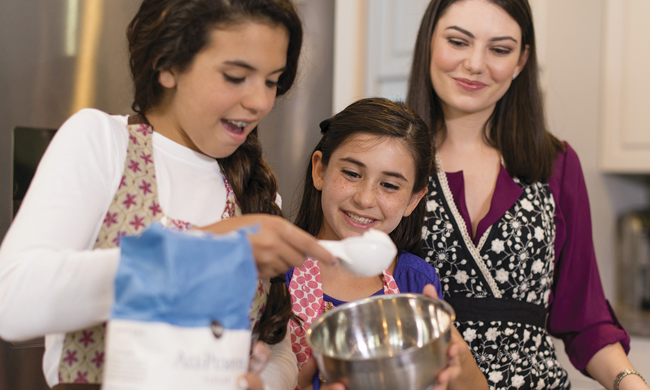Make the Kitchen a Classroom
11/01/2017 04:30AM ● By Family Features

Each year, families spend a lot of time in the kitchen together during the holidays. These moments not only make happy memories, but can be teachable moments as well, where children can learn valuable knowledge about the world around them.
Cooking can be used as a creative way to engage kids in science, technology, engineering and mathematics (STEM), which touches many aspects of daily living. Finding the connections between the classroom and day-to-day life can inspire children and pique their interest in these subjects.
Cooking and baking can be enjoyable pastimes for kids and parents who incorporate science in fun, interactive ways, ranging from the basics of measurements to thermodynamics and beyond.
Measurements: Every recipe starts with a list of ingredients, broken down by measurements. These measurements are taken with precision and care, since using the proper amount of each ingredient ensures the recipe will work. Many STEM fields, including chemistry, engineering, coding and more, require exact measurements or calculations. Cooking is a tangible way to teach children the importance of the precision and attention to detail that is vital in STEM careers. Even a simple process like bread-making can show the importance of measurement accuracy. By varying the correct measurements, kids can see how the finished product differs and how too much or too little of a certain ingredient can throw off the chemical balance within the recipe.
Allergies: Cooking affords educators and parents the chance to teach vital food safety practices and also discuss the biology of allergies, such as how allergens affect the body. The holiday season provides an opportunity to discuss with kids which ingredients in candy might contain allergens for them or the kids around them. Peanut allergies are particularly prevalent and are an understandable example to discuss with kids.
Thermodynamics: Cooking is the process of changing the chemistry of food, usually by transferring energy in the form of heat to the food for long enough that it is safe and digestible and achieves the desired flavor, texture and appearance. Baking a batch of holiday cookies can be the perfect lesson in thermodynamics, the transfer of heat. The heat of the oven alters the chemistry of the cookie batter, transferring heat and transforming the gooey lumps into delicious treats. Helping children observe the differences between the batter that goes into the oven and the cookies that come out can teach them the cause and effect of this process.
STEM Programs: While it’s important to show children how STEM plays a role in their everyday lives and activities, one of the best ways to instill passion and interest in these topics is by letting them experience and experiment with it themselves. Participating in a program such as ExploraVision, the only STEM-related competition of its kind, allows kids to create ideas for new technological innovations in response to current real-world issues. Participants work on their projects throughout the holidays, supplementing their science education, while also developing problem-solving, analytical and collaboration skills.
Parents and students can learn more about the competition and how to enter, and teachers can find free tips for engaging students, at exploravision.org.
Photo courtesy of Getty Images







